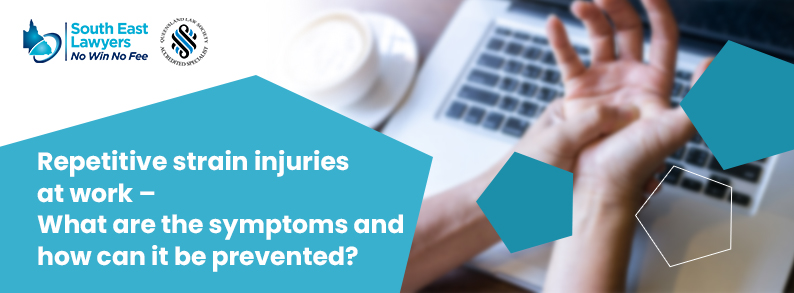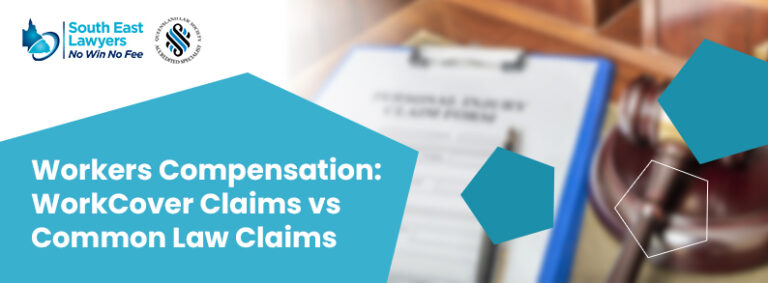Repetitive strain injuries (RSI) can occur in all types of workplaces and can harm an employee’s health and ability to perform everyday duties. Here we will explain everything you need to know about RSI’s, how to recognise the symptoms and what you can do to prevent falling victim to this common workplace strain.
What is repetitive strain injury?
Repetitive strain injuries are the result of gradual damage to the muscles, nerves, or tendons from overusing or repeating tasks for extended periods. They can be caused by an array of activities, some common ones include.
- Holding onto tools
- Vibrating equipment
- Typing or using a computer mouse
- Poor posture
Symptoms of repetitive strain injury
RSI’s most commonly affect the neck and shoulders, the hands and wrists or the elbows and forearms.
Symptoms include:
- Tingling
- Swelling
- Lack of strength or muscle fatigue
- Weakness, difficulty performing simple tasks
- Pain
- Cold hands, more so at the fingertips for extended periods
- Numbness, tremors, or clumsiness
- Tender to touch, burning, shooting or achy pain.
Most people start off noticing symptoms when they are carrying out repetitive movements, if left untreated, the symptoms can intensify.
How to recognise the early signs of a repetitive strain injury
It is vital workers know what to look for early on to prevent an RSI injury from worsening. Most notice symptoms such as pain, tingling, and discomfort whilst performing repetitive tasks. At first, the symptoms may pass after a few hours once the repetitive task has ended. As the injury progressively gets worse, the pain may take a few days to subside and worsen to constant pain.
Causes of a repetitive strain injury
As the name suggests, repetitive strain injuries are commonly caused by doing repetitive movements. Over time this can cause damage to the soft tissue. Common causes of RSI:
- Lifting, shifting, pulling heavy objects
- Poor posture or being in an awkward position over an extended period
- Compromised health and fitness
- Stress to muscles from overuse
- Repetitive motions
- Not enough breaks
- Tensing and holding muscles in the same position
- Cold working conditions
- Working too fast
- Inadequate training on how to perform duties safely
Those with pre-existing soft tissue conditions are more likely to experience repetitive strain injuries.
How is a repetitive strain injury diagnosed?
It is best to speak with your GP when you first notice symptoms of RSI, this ensures that minimal damage has been sustained to the soft tissue and healing is less likely to be a long process. The doctor will examine the area and ask you some questions to determine the cause. If your doctor diagnoses you with RSI, they will then advise you of your treatment options. For minor, to mild RSI your doctor may refer you to a physiotherapist and for more severe cases, surgery may be needed.
Treatment for a repetitive strain injury
There are various treatment options for an RSI and which method is used to treat your injury will depend on the severity. Some include:
- RICE method – Rest, Ice, Compress and Elevate
- Strapping the area to restrict movement
- Physiotherapy exercises and stretches
- Steroid injections
- Non- steroidal anti-inflammatory drugs
- Surgery
Your GP or health provider can advise you of ways to reduce strain on your impacted muscles by altering your work practices and environment.
How long does it take for RSI to heal?
The healing time can vary from person to person however, for people that have good health and have taken the necessary steps early on, the recovery is around 6 months or less. In some cases, when the injury is left untreated, it can cause irreversible damage that is likely to become a long-term and chronic health issue.
How to prevent an RSI at work
Most people get RSI at work from conducting their everyday duties or because of their working conditions. You as an employee must be proactive about minimising strain and stress on your body whilst working. Here are some strategies you can implement to decrease your risk of a repetitive strain injury:
- Maintain good posture.
- Get up and stretch your hands, wrists, fingers, neck, back, legs. Do this as often as you can during the day.
- Ensure your keyboard is at the right height and if you can, set your computer screen to be at eye level.
- Make sure you have a supportive chair. Sit with your feet flat on the floor.
- Spend time standing during the day.
- Use a headset rather than a telephone.
Regardless of whether you work at a desk or not if you are completing repetitive tasks as a part of your role make sure you take the time to stretch, have regular breaks, and be mindful of your posture to prevent an RSI.
Repetitive strain injuries are a common workplace occurrence that can be avoided by putting some preventative measures in place. What may start as a small ache can lead to a chronic injury that can be extremely painful and prevent you from being able to partake in normal every day and work activities. It is important to recognise the signs and take the necessary steps to prevent the injury from worsening. When treatment is started in the early stages most make a full recovery. If you have sustained an RSI at work and believe it is a result of your working conditions get in touch with our expert team at South East Injury Lawyers, you may be entitled to compensation.






